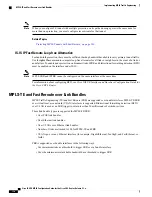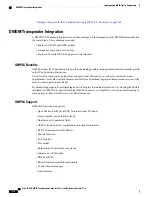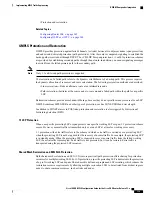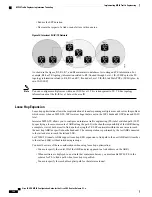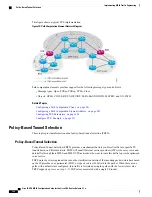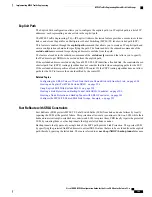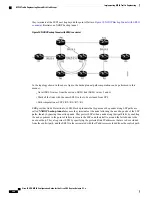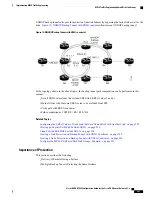
Co-existence of Path Protection with Fast Reroute
Path protection and FRR can be configured on the same tunnel at the same time. The co-existence of path
protection and FRR on the same tunnel provides these benefits:
•
Protection is expanded
—
having an FRR protected tunnel that is also path-protected ensures that failures
of non-protected links on the primary path are handled more efficiently by a quick switch-over to the
pre-signaled standby LSP.
•
Quick and effective re-optimization
—
having a pre-computed standby LSP allows the system to minimize
re-optimization LSP path calculation and signaling, by simply switching over to the pre-signaled standby
LSP. Effectively, path protection switch over replaces the post-FRR LSP down event re-optimization.
•
Total time on backup is reduced
—
handling FRR failure using a path protection switch over reduces
total time on backup because the traffic is diverted from the backup to the standby, as soon as the head-end
receives the FRR LSP down notification, without having to wait for a re-optimization LSP.
MPLS-TE Automatic Bandwidth
The MPLS-TE automatic bandwidth feature measures the traffic in a tunnel and periodically adjusts the
signaled bandwidth for the tunnel.
These topics provide information about MPLS-TE automatic bandwidth:
MPLS-TE Automatic Bandwidth Overview
MPLS-TE automatic bandwidth is configured on individual Label Switched Paths (LSPs) at every head-end.
MPLS-TE monitors the traffic rate on a tunnel interface. Periodically, MPLS-TE resizes the bandwidth on
the tunnel interface to align it closely with the traffic in the tunnel. MPLS-TE automatic bandwidth can perform
these functions:
•
Monitors periodic polling of the tunnel output rate
•
Resizes the tunnel bandwidth by adjusting the highest rate observed during a given period
For every traffic-engineered tunnel that is configured for an automatic bandwidth, the average output rate is
sampled, based on various configurable parameters. Then, the tunnel bandwidth is readjusted automatically
based upon either the largest average output rate that was noticed during a certain interval, or a configured
maximum bandwidth value.
This table lists the automatic bandwidth functions.
Cisco IOS XR MPLS Configuration Guide for the Cisco CRS Router, Release 5.1.x
190
Implementing MPLS Traffic Engineering
Co-existence of Path Protection with Fast Reroute

